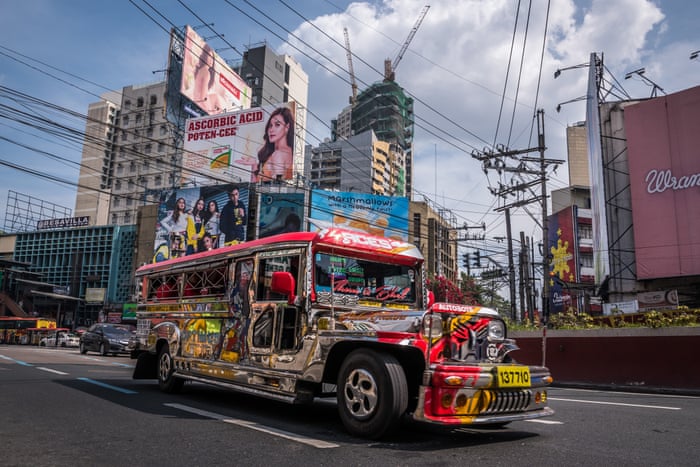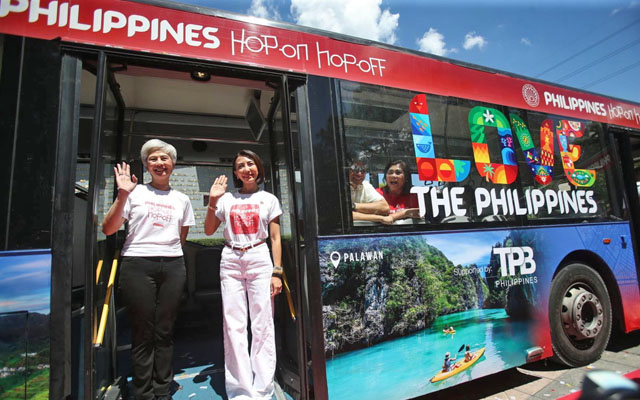Transit Advertising Philippines: A Cutting-edge Way to Promote
Transit Advertising Philippines: A Cutting-edge Way to Promote
Blog Article
Recognizing the Role of Transit Marketing in Enhancing Brand Name Visibility and Customer Involvement
Transportation advertising has actually arised as a pivotal component in the advertising and marketing landscape, providing unique opportunities for brand names to elevate their visibility and involve consumers properly. With the capability to get to a restricted and diverse audience during their day-to-day commutes, these advertising and marketing techniques are not simply regarding presence; they are regarding producing meaningful connections with prospective clients. As we check out the multifaceted benefits and ingenious approaches within transportation advertising and marketing, it becomes necessary to consider just how these aspects collectively affect consumer understanding and behavior, questioning about their long-lasting effect on brand name loyalty.
Interpretation of Transit Marketing
Transportation advertising and marketing describes the practice of promoting items, solutions, or brand names through ads positioned around public transportation systems. This form of marketing encompasses a selection of positionings, including posters on buses and trains, electronic screens at transit terminals, and wraps on the exterior of cars. It intends to get to a diverse audience, maximizing the high foot web traffic connected with public transit.
Transportation advertising and marketing is tactically positioned to catch the attention of commuters, who usually invest considerable time waiting or taking a trip. By integrating ads into the day-to-day routines of individuals, brands can produce an enduring perception and foster brand acknowledgment. The medium is especially reliable in metropolitan settings, where public transport is a key mode of travel.
In addition, transit advertising and marketing can assist in localized targeting, enabling companies to reach particular demographics based on transit routes and station locations. As metropolitan populations expand and the usage of public transport increases, this advertising method has obtained importance as an important component of incorporated advertising methods. The dynamic nature of transportation marketing, combined with its capacity to involve customers in a restricted setting, underscores its value in contemporary advertising techniques.
Advantages of Transit Advertising
The performance of transit marketing depends on its ability to deliver a wide range of benefits to brand names looking for to boost presence and involvement. Among the primary advantages is the comprehensive reach it supplies; transportation ads can successfully target diverse demographics across urban areas, getting to both pedestrians and commuters alike. This broad exposure significantly improves brand understanding.
One more benefit is the high regularity of impacts. As transit vehicles take a trip along recognized routes and quit at multiple places, they develop repetitive exposure that strengthens brand messages. This frequency cultivates familiarity, which is vital in customer decision-making.
Transportation advertising and marketing is also economical compared to various other media systems. Provided its expansive reach and capacity for high perceptions, brands typically experience a lower cost per thousand perceptions (CPM), maximizing their marketing spending plan.
Moreover, transit ads can produce a sense of community connection. By lining up with local transportation systems, brand names can resonate with regional audiences and promote a sense of neighborhood pride. This localized method improves brand loyalty and interaction, making transit advertising and marketing a compelling choice for organizations intending to strengthen their visibility on the market.

Efficient Techniques for Transportation Projects
To optimize the influence of transit campaigns, brand names must take advantage of tactical planning and execution customized to their target market. Initially, determining the demographic characteristics of the audience utilizing public transportation is essential. This permits brands to produce individualized messaging that reverberates with potential clients.
Next, choosing the ideal transportation tools is vital. Whether utilizing bus wraps, train posters, or electronic screens, each tool has one-of-a-kind benefits that can boost presence. For example, vibrant visuals on bus covers can attract interest, while digital advertisements can be updated often to mirror prompt Visit This Link promotions.
Moreover, integrating a cohesive branding approach across transportation systems ensures uniformity and enhances the brand's identification. Making use of unforgettable taglines and attractive layouts will certainly strengthen brand name recall among commuters.
By using these strategies, brands can effectively harness the potential of transit advertising and marketing, cultivating better recognition and connection with their target audience. Eventually, a well-executed transportation campaign can drive significant development in brand name exposure and consumer involvement.

Measuring Effect and Involvement
In examining the effectiveness of transportation marketing campaign, accurate dimension of impact and interaction is necessary for brand names seeking to enhance their advertising and marketing approaches. Metrics such as reach, regularity, and impressions supply fundamental data to evaluate exposure. Evaluating these aspects aids determine the amount of possible clients are exposed to the ads during their daily commutes.
Interaction can be further determined via consumer communications, such as web site web traffic, social media sites states, and direct responses to calls-to-action featured in the ads. Making use of tools like QR codes or unique URLs can facilitate tracking of consumer habits straight connected to transportation projects. Studies and responses devices likewise function as useful techniques to gather qualitative information on consumer perceptions and recall of the ad.
Moreover, advanced analytics and acknowledgment designs can associate transit exposure with subsequent investing in habits, using understandings right into the return on investment. By utilizing an extensive strategy that combines qualitative and quantitative measures, brand names can create a nuanced understanding of their transportation advertising influence. Inevitably, this data-driven approach allows brand names to fine-tune their projects, ensuring they resonate efficiently with target audiences and enhance overall brand exposure.
Situation Researches of Successful Projects
Effective transportation marketing campaign serve as compelling examples of just how reliable strategies can boost brand exposure and engagement. Transit Advertising Philippines. One noteworthy case is the "I Love New York" campaign, which transformed the city's image and drew in countless travelers. By using subway ads, billboards, and bus covers, the project produced a strong, natural brand name identity, resulting in a considerable uptick in tourist and regional organization patronage
Another excellent campaign is Coca-Cola's "Share a Coke" campaign, which Our site leveraged transit advertising to personalize the brand name experience. By including prominent names on promotional products across numerous transportation systems, Coca-Cola promoted a deeper emotional connection with consumers, urging them official site to share their experiences on social media.
In addition, the "Got Milk?" campaign properly used public transport ads to get to a wide target market, enhancing the message of the relevance of milk in a well balanced diet. The project saw a measurable increase in milk intake in target demographics.
These situation studies illustrate that when implemented thoughtfully, transportation marketing can significantly improve brand name presence, foster consumer engagement, and drive measurable results, showing its essential role in contemporary advertising and marketing methods. - Transit Advertising Philippines
Final Thought
In final thought, transit marketing serves as an essential device for enhancing brand exposure and fostering customer involvement. By using tactically put promotions within mass transit systems, brand names can effectively reach varied audiences and strengthen acknowledgment with constant direct exposure. The implementation of targeted messaging and innovative strategies better enhances the influence of transportation projects. Inevitably, the capacity to gauge engagement and evaluate successful case research studies emphasizes the performance of transit advertising and marketing in driving brand loyalty and customer interactions.
Transportation marketing has emerged as an essential element in the advertising landscape, providing one-of-a-kind possibilities for brands to elevate their visibility and engage consumers properly.In addition, transportation advertising and marketing can help with localized targeting, enabling companies to get to specific demographics based on transit paths and terminal areas.In evaluating the effectiveness of transit advertising and marketing projects, precise measurement of influence and interaction is vital for brand names looking for to optimize their advertising and marketing methods.Successful transit advertising and marketing projects serve as compelling examples of exactly how effective techniques can boost brand visibility and involvement.In verdict, transportation advertising and marketing offers as an essential tool for improving brand name visibility and cultivating customer interaction.
Report this page